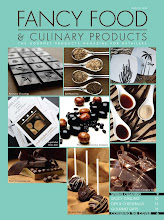 |
With the
specialty food market approaching 100 billion dollars (it’s expected to reach
that number in 2016) this gourmet-centric universe is growing roughly three
times as fast as the regular food market. In 2014, 145
million people—that’s 59 percent of U.S. consumers—purchased specialty foods,
according to this year’s Today’s
Specialty Food Consumer Report produced by the Specialty Food Association
and Mintel International. These two organizations have been conducting research together
for 10 years now, and this year they’ve produced some highly detailed,
top-level statistics on just who is purchasing specialty foods, how they’re
using these products, as well as their attitudes, interests and concerns.
At The Core
Core
specialty food consumers defined by Mintel are aged 18 to 44; affluent, earning
more than $75,000 annually; more likely to buy specialty foods from a broader
range of retailers; the biggest weekly spenders on grocery and restaurant food;
and ones who spend a larger percentage of their food dollars on specialty
products each week. Within this group, 18-24s and 35-44s are most likely to
purchase the largest range of specialty food categories.
 |
| Infographics and images courtesy of the Specialty Food Association |
The top ten categories that these specialty food consumers are buying range from chocolate (1) and olive oil (2) to cheeses (3), coffee (4), beverages (8), and tea (10). Much of the top ten categories are consistent with 2013, but tea has most noticeably moved up the ladder.
When
surveying popular categories by age group, research found that 18-24s
tend to gravitate towards on-the-go items. Snacks, condiments, cookies and
chocolates were all prominent purchases for early Millennials who bought these
products for guests, gifts and the office. Ready-to-eat prepared foods as well
as cooking sauces, rice, quinoa and others were popular among 25-34 year olds. Baking
mixes, cooking sauces, and products that offer short cuts in home cooking got
the attention of 35-44 year olds who might be time pressed juggling families
and careers. Additionally, since 2006, women, younger adults, affluent
households, and Hispanics have been the most likely purchasers of specialty
foods.
These
specialty food consumers value food tremendously and make that known with their
wallets. They’re the biggest weekly spenders on both groceries and restaurants,
and they’re most likely to spend a larger percent of their food dollars on
specialty items. The research has put a spotlight on spending habits, and these
consumers are happy to pay more for better quality food—be it beer, cheese,
meat, or farmer’s market produce.
Sustainability is Key
According to
the 2014 Consumer Report, 84 percent of specialty food consumers believe it’s
important to buy sustainably produced food, and retailers can benefit by
attracting the subset of specialty food consumers who purchased products with
sustainable and ethical claims in the past six months. Grocers should stock an
array of ethically produced food and beverages and clearly call out their
claims. The most commonly purchased food and beverage product claims are
all-natural (62 percent), organic (56 percent) and locally sourced (47
percent). What’s more important to comprehend is that nearly ¾ of specialty
food consumers support companies that practice sustainability as a whole.
Digitally Native
The digital
niche (within the specialty food market niche) is growing, and almost half of
specialty food consumers said that they had bought gourmet products online.
These consumers are more active on social media to talk and learn about food
than ever before, and Millennials, the most dominant buying group, are leading the
pack. It’s their second nature to purchase online and give recommendations
online. For specialty food consumers, the sheer number of time online exceeds
two hours per day outside of work—they’re engaged in the gourmet food universe
and they’re using these platforms for the purpose of connecting and sharing
products, ideas, brands and retailers online.
Piece of the Socioeconomic
Pie
The aging U.S. population (over-55’s) are actually the fastest-growing
age group, but they are the lightest users of specialty products. Retailers and
wholesalers must also take into account the delayed maturation of Millennials
(they’re getting married, starting families, and buying houses later than any
generation prior). The combination of both means that the industry is
vulnerable to a slower market growth going forward. To combat this, companies
and retailers must either begin marketing to an over-55 crowd, or push for the
quicker maturation of Millennials’ purchasing decisions—the latter seeming more
effective.
Additionally, brands must take into account that the industry’s
greatest consumers are ones that bring in more than 75K annually—however, this
is only 30 percent of the U.S. population. Find ways to market to buyers who
don’t make exceptional incomes.
For more information and to check out the full 2014 Consumer Report, visit the Specialty Food Association.


|